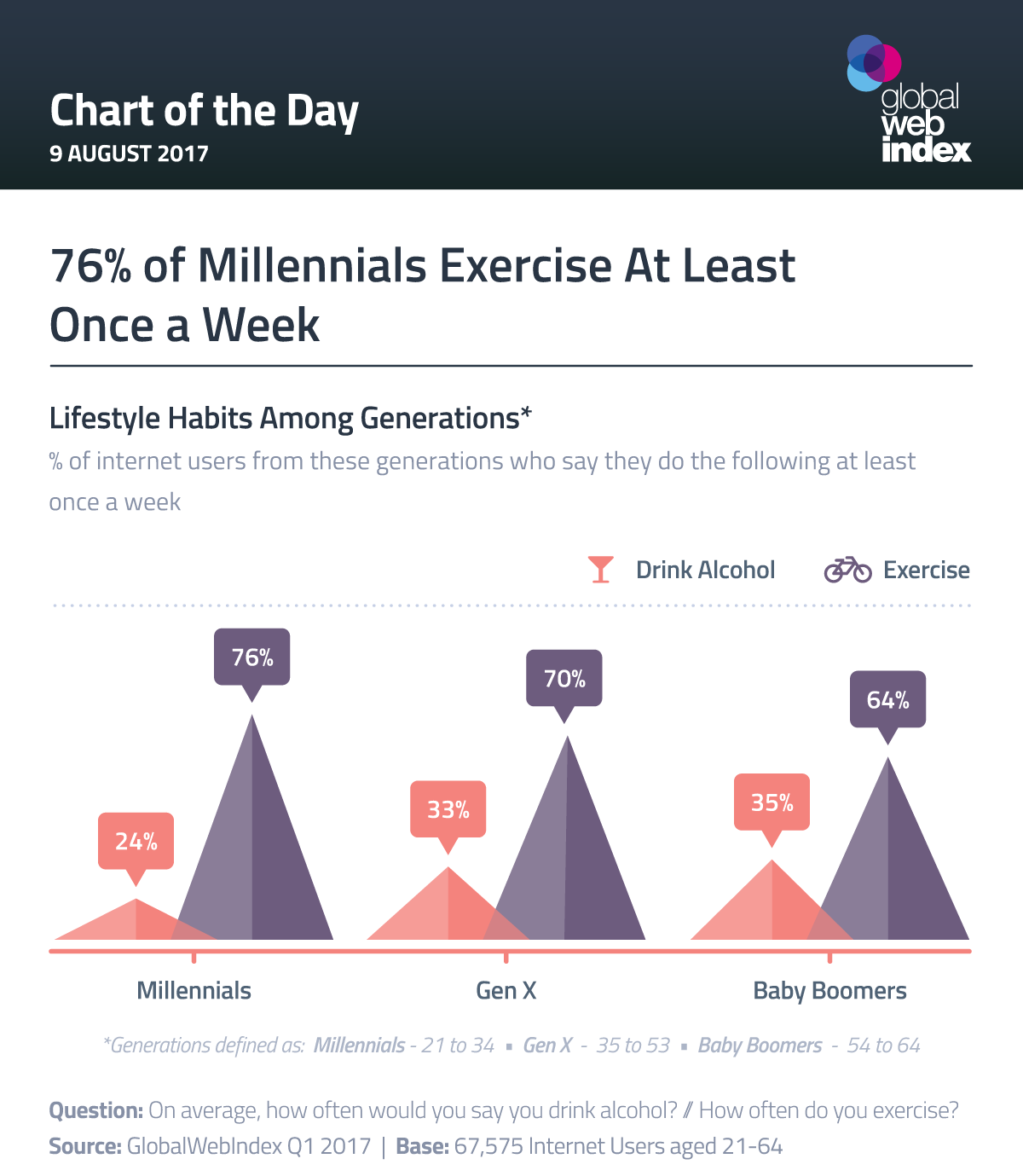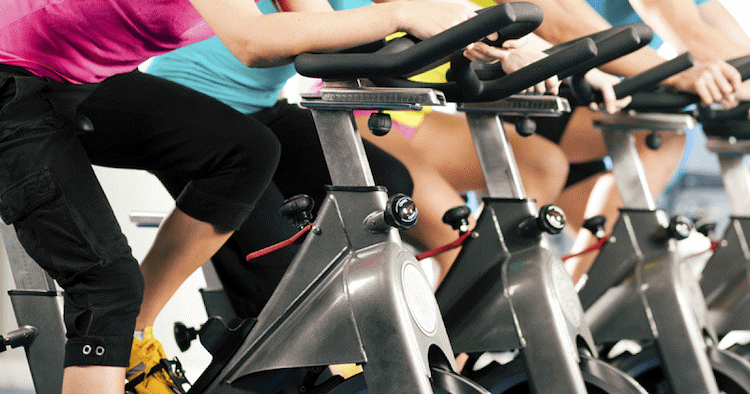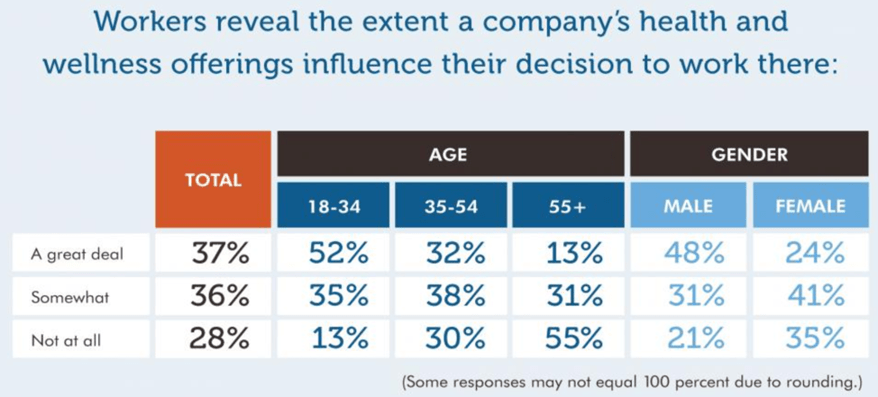Just as millennials are unique relative to other generations in regard to how they shop, work, and play, they are also distinct in their approach to health and wellness. Baby boomers may be the kings of “no pain, no gain,” but the 56 million millennials in the United States approach exercise and health differently.
Millennials have been called the most health conscious generation, and for good reason. Whether it is eating clean foods, exercising frequently, or taking a mental health day, they believe in a holistic approach to wellness. They want wellness to be integrated in their daily lives and are willing to pay for the privilege.
 As an example of millennials’ dedication to fitness, a survey by CreditCards.com found that they spend about $6.84 billion a year in gym memberships, which is double that of older generations. To own a gym membership is one thing, but to actually go to the gym is something else. Millennials say they do that too, with 76% saying they exercise at least once a week, which is more than other generations.
As an example of millennials’ dedication to fitness, a survey by CreditCards.com found that they spend about $6.84 billion a year in gym memberships, which is double that of older generations. To own a gym membership is one thing, but to actually go to the gym is something else. Millennials say they do that too, with 76% saying they exercise at least once a week, which is more than other generations.
When it comes to exercise, millennials look for programs that fit their busy schedules, offer variety and fun, and are social. Health and wellness programs, both large and small, are responding to the following millennial requirements.
Offer Efficient Exercise
Don’t look for millennials to spend hours on a treadmill or in a weight room. When this generation goes to the gym, they want to get in, get sweaty, and get out. The rise of CrossFit and high-intensity interval training (HIIT) emphasizes a hard, efficient workout that then frees up the rest of the day.
Vary Things Up
Millennials want to switch up their exercise. One day it may be a guided workout with a small group at Orangetheory and the next day, it’s a bike session at SoulCycle. Millennials look to smaller, boutique gyms to provide more specialized workouts, which is evidence by the growth in on-demand fitness and decline of traditional gyms.

Make It Social
The smaller boutique workout makes it easier for exercise to be social. Instead of finding space in a humongous exercise class, millennials reserve their spots in advance, so they can work out with their friends. This is evidenced by the growing market for fitness services, like ClassPass.
Use Technology For Personalization
Millennials use technology to keep track of their lives, and monitoring their health and wellness is no different. Whether it’s attending a class that uses heart rate monitors to record a participant’s effort or using an app that guides an athlete through a gym work out or wearing a device that tracks steps for a corporate challenge, millennials turn to technology to measure their individual progress and receive feedback on performance.
Wellness At Work
Millennials are willing to pay for these classes because they value the physical and mental benefits that exercise provides. This generation’s quest for wellness doesn’t just take place during their time off. Rather, millennials look for these habits to be reinforced at work. Seventy-three percent of job candidates consider wellness benefits when selecting an employer.

Takeaway
Given the shift in overall expectations of what exercise programs should offer, corporate wellness programs should look at their wellness programs to determine if its offerings meet the needs of millennials. This doesn’t mean excluding the needs of other generations of employees, but it may mean continually adjusting wellness offerings to ensure the program serves as a competitive advantage in recruitment and retention, especially since wellness benefits are such an important consideration for millennials.












